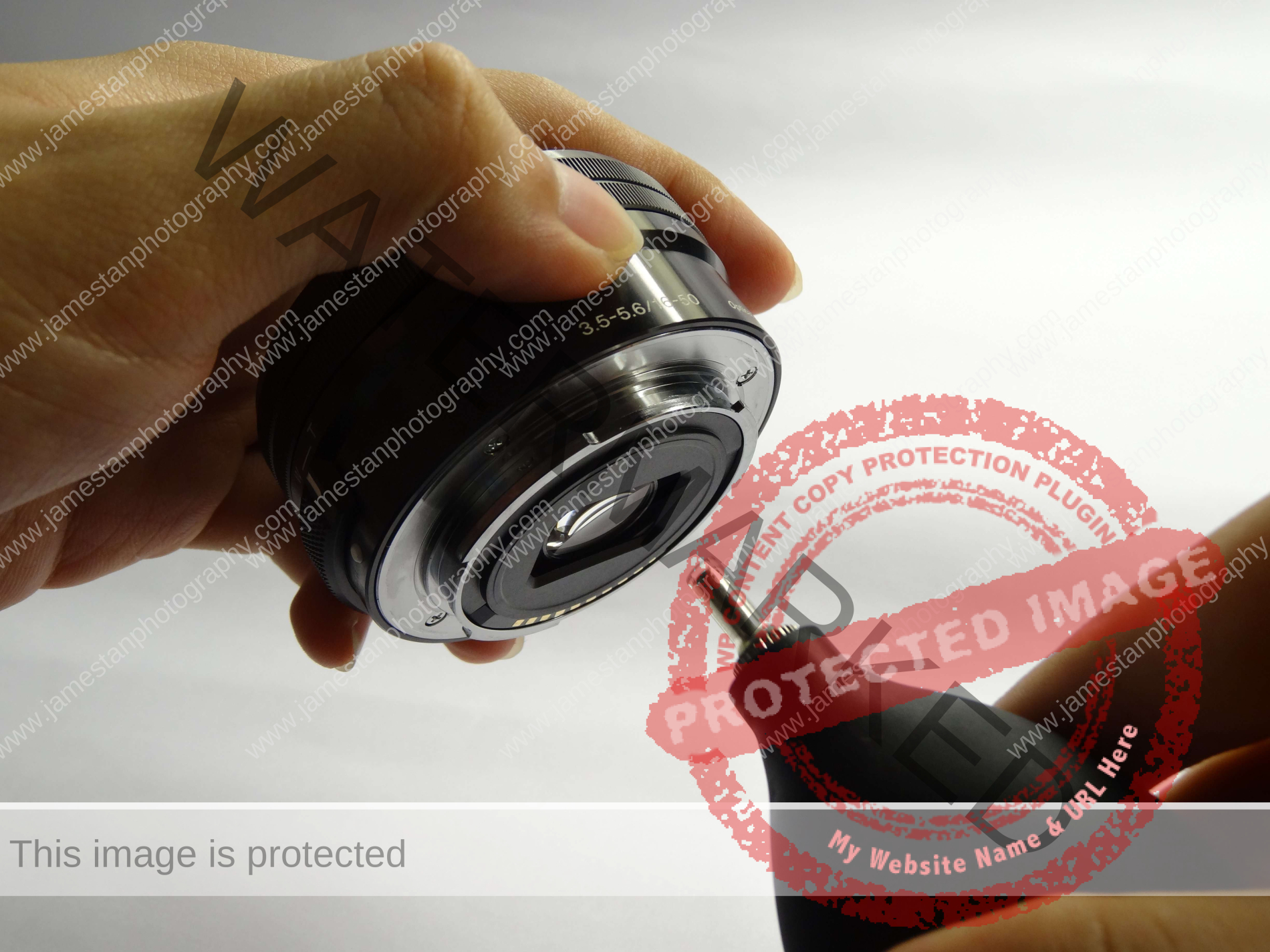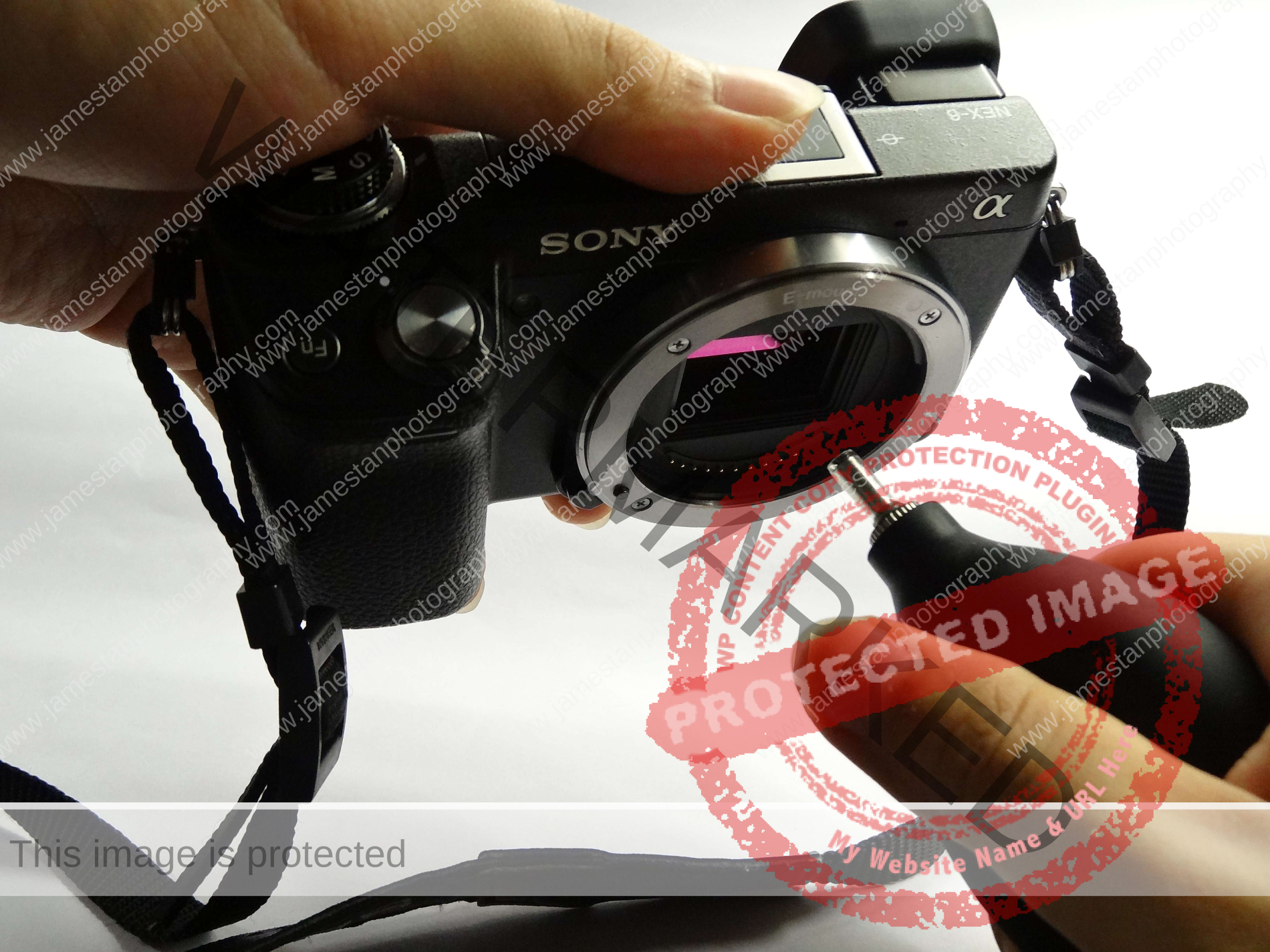I recently noticed some interesting dim spots that appear in my landscape shots, and they appear at the same place consistently, as shown below. I realized that I faced the common issue that annoys all the interchangeable-lens camera users: the sensor dust.




Camera sensor dust is unavoidable for interchangeable lens cameras, especially when we have more than one lens to switch between, so it is good to know how to deal with the camera sensor dust. Therefore, I decided to compile a quick guide to share with you guys when cleaning my camera (Sony NEX-6). I hope it can help those who need it. The guide consists of two parts:
Identify Steps and Cleaning Steps.
How to Identify the Dust
1. Set Your Lens Aperture to F 11 or Smaller
The dust particle would not show up when the lens is set at the widest open like F1.8, F2.8, etc. Set the aperture to F11 or smaller to get enough depth of field so that the dust on the camera sensor will show up.
2. Set to Manual Focus Mode
We need to defocus to enlarge the dust particle manually. Why? When defocused, the dust would become a Bokeh kind effect (not a pleasant one though).
3. Shots at Various Clean White/Sky Blue Background
Camera sensor dust particle will show up as a dim faded spot at the same spot among a series of your shots. They are easier to spot in a simple light background.
4. Examine the Shots with Your Monitor
It is easier and faster to examine whether those dim spots occur in the same area throughout your test shots. Usually, 3 -4 shots are enough to determine any dust particle stick on your camera sensor.
5. Repeat the Steps with Second Lens
Lens prone to dust, too, but dust in the lens rarely (nearly none of them) appear on your image. The steps above are enough to identify if there is any dust particle stick on your camera sensor. Still, you can always use the second lens to repeat the identification steps above to ensure that the dust spot is caused by your camera sensor (dim spots at the same place) or your lens (dim spots disappear).
Once you have identified the dust particle stuck on the camera sensor, we can proceed to the cleaning steps below.
How to Clean The Dust
1. Use the Camera Cleaning Mode
The decent camera has a built-in sensor cleaning mechanism. Switch it on manually and then repeat the identification steps above to check if the dust particle is removed or not. If the dust particle still appears on your image, we have to do the following to clean it manually.
2. Turn off Your Camera
The electricity charge on the camera sensor can easily attract any dust particle. Turn the camera off before we start the cleaning job.
3. Get an Air Blower
The air blower is an essential accessory for the camera system. A bigger air blower is better and easier for the cleaning job.
4. Face the Surface Downward
Keep whatever surface you (your air blower) are blowing face downward; otherwise, the dust particle might fall back to the surface again.
5. Blow the Rear Lens Cap and Lens Rear Element
Most people are not aware that the dust will get stuck inside the lens cap too, the dust in the cap might stick to the lens and get into your camera indirectly. Remember to clean both the lens rear element and lens cap. Once you clean the dust in the lens cap, place it onto the lens to prevent any dust particle in the air from falling on the surface you just cleaned.
6. Blow the Camera Sensor
It should be the last step. Once we clean the sensor, we can immediately attach the cleaned lens back to the camera body. The blowing process should not take more than a few minutes, including blowing the lens cap, lens, and camera sensor. A few blows for each of them is enough.
Repeat the identification steps in part 1 above, and you should get a clean image result now.
That’s all for today’s tips. Let’s enjoy the clean and clear image result again. Thanks for your reading, and I hope you benefit from it.












